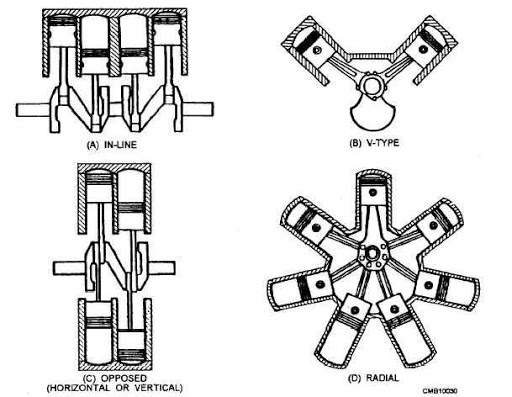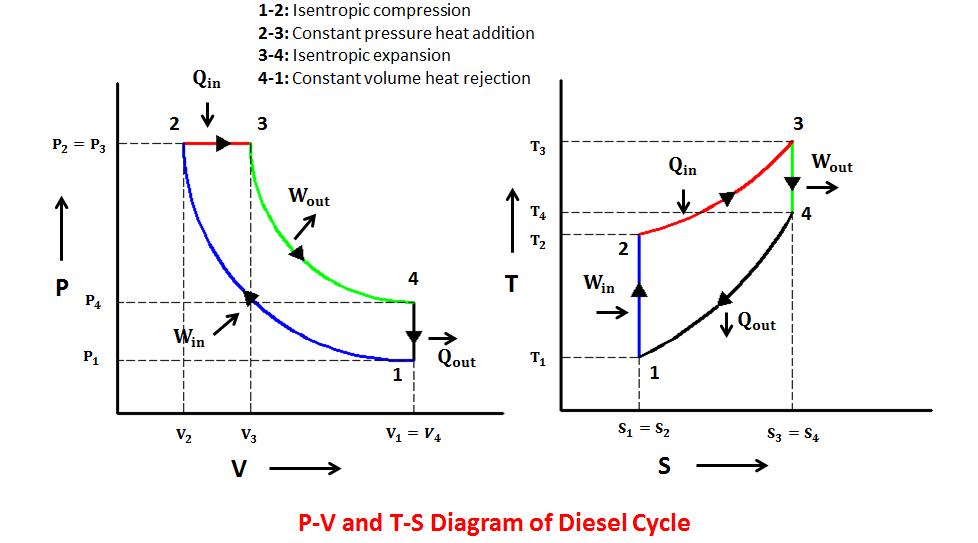In-line engine The cylinders are arranged in a single row, one behind the other. They may be vertical, as in most modern light vehicles, horizontal are used in coaches where the engine is positioned under the floor, or inclined at an angle to allow for a lower bonnet line.
Vee engine The cylinders are arranged in two rows at an angle to one another. The angle for two-, four- and eight-cylinder engines is usually 90 . For six- and twelve-cylinder engines the angle is usually 60.
Opposed piston or cylinder engine This is where the cylinders are at an angle of 180 apart and usually positioned horizontally
8) The three basic cylinder arrangements for automotive engines are
inline, V and opposed

Related Automobile Engineering MCQ with Answers
Spark ignition (S.I) engines
The most prominent difference between Spark Ignition (SI) and Compression Ignition (CI) engines is the type of fuel used in each. In SI engines petrol or gasoline is used as fuel, hence these engines are also called petrol engines. In CI engines diesel is used as fuel, hence they are also called diesel engines.

Diesel cycle
The Diesel cycle is a combustion process of a reciprocating internal combustion engine. In it, fuel is ignited by heat generated during the compression of air in the combustion chamber, into which fuel is then injected.
A Diesel cycle consists of one constant pressure, one constant volume and two isentropic processes.

Compression ignition (C.I) engines
The diesel engine, named after Rudolf Diesel, is an internal combustion engine in which ignition of the fuel is caused by the elevated temperature of the air in the cylinder due to the mechanical compression. Hence diesel engines are also called as Compression ignition (C.I) engines.

Diesel cycle is more efficient than Otto cycle
For the same maximum pressure and temperature Diesel cycle is more efficient than Otto cycle.